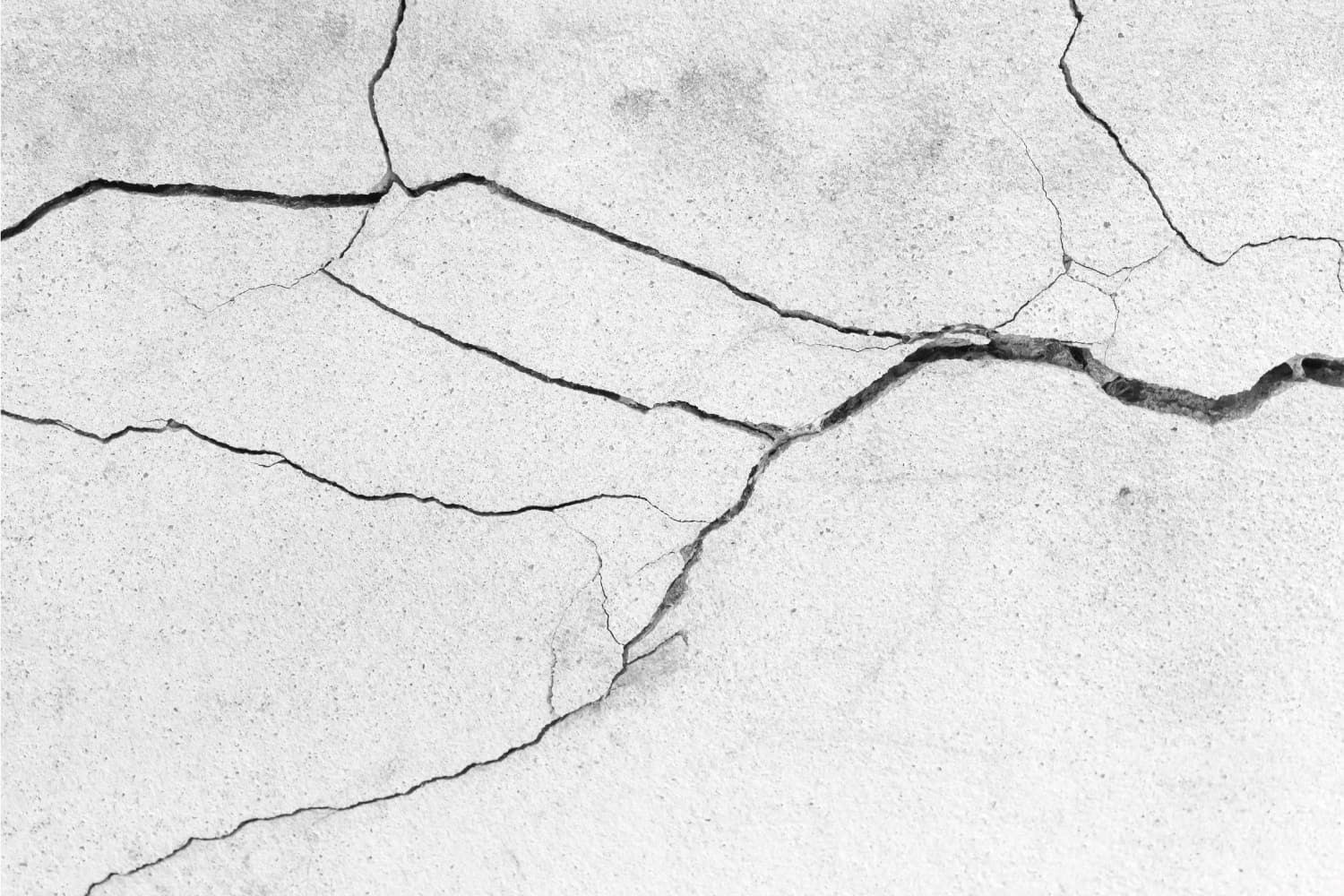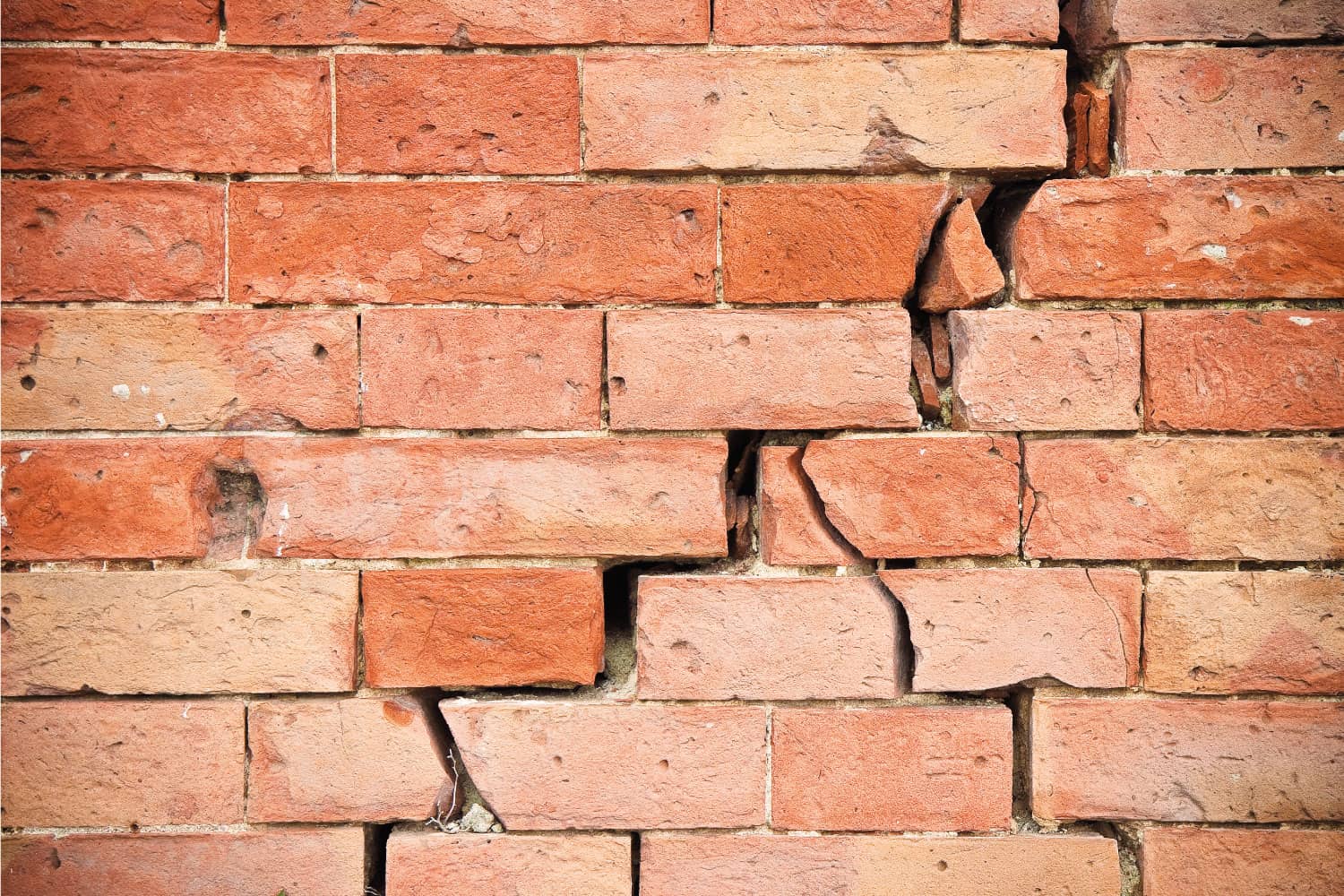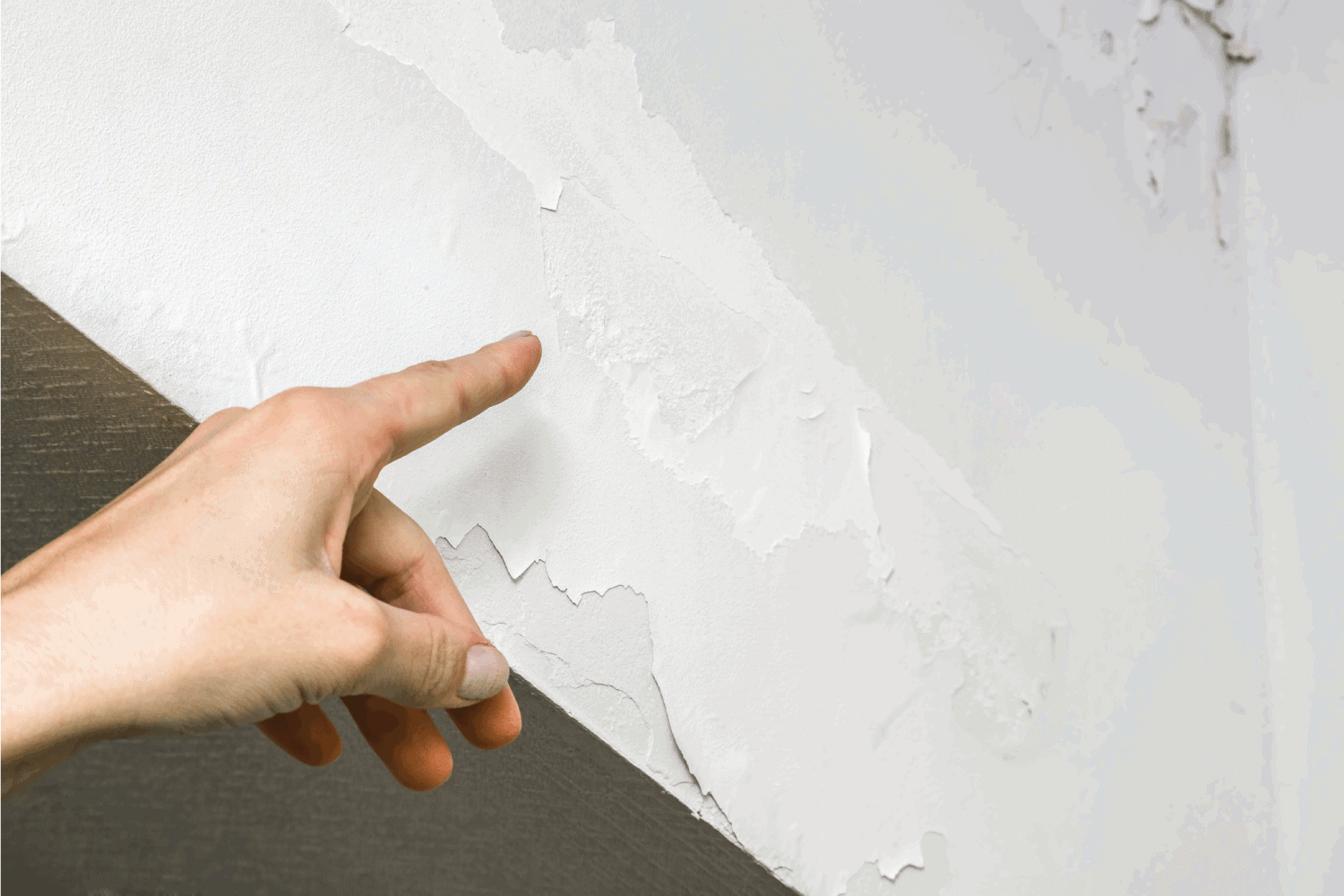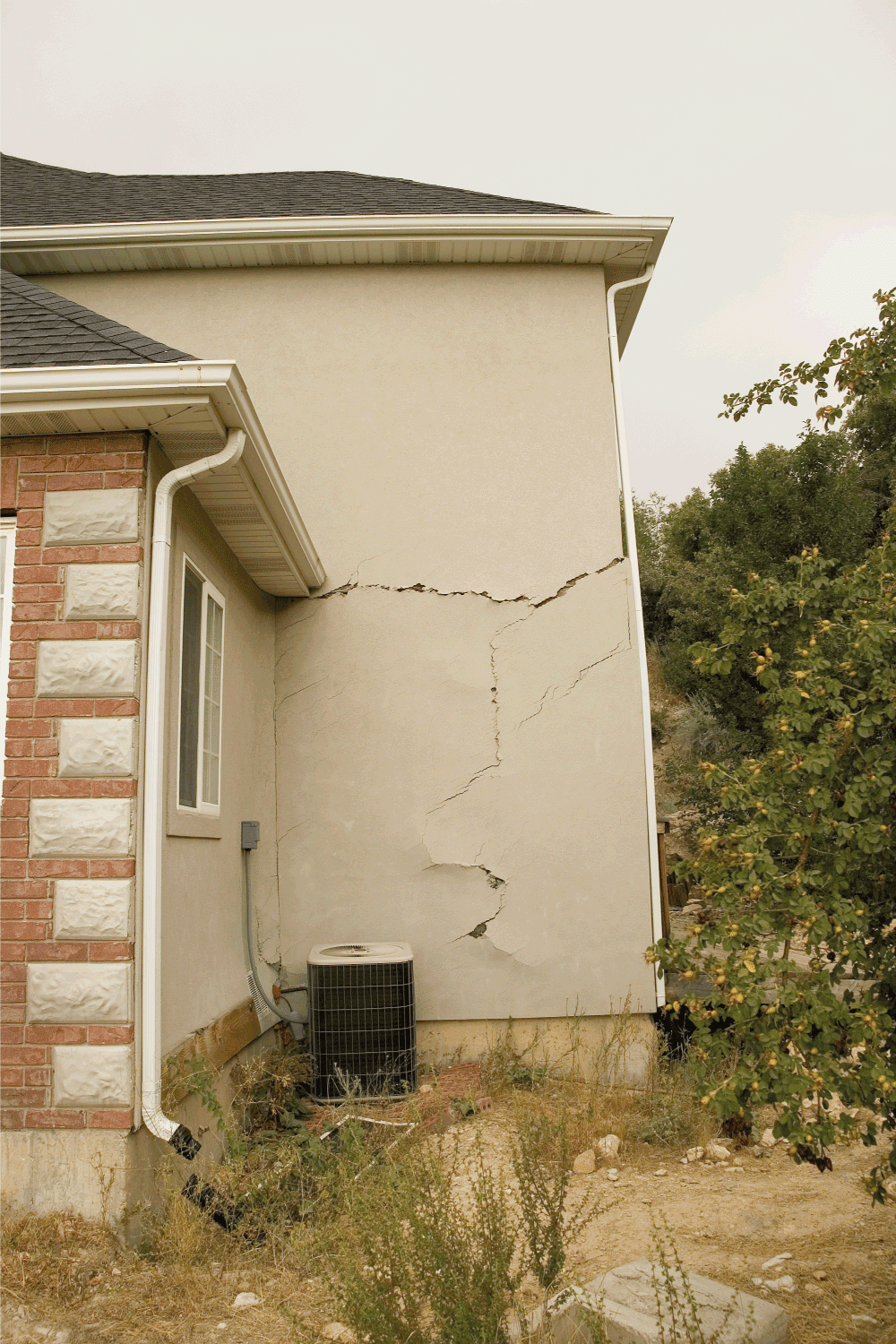Some wall cracks don’t warrant significant concerns. But some wall fractures may require immediate attention. So what are the types of wall cracks? Also, what are the kinds of cracks that need prompt care? We researched for you about these matters, and here's what we found.
Five relatively common kinds of wall cracks exist, which are:
- Horizontal cracks
- Vertical cracks
- Spider web cracks
- Door and window cracks
- Stair-step cracks
Take note that each type of crack often verifies the presence of either foundation or structure problems. Keep reading as we talk about these fissures in greater detail. We’ll also discuss the ways on how to fix certain cracks.
![homeowner pointing at cracked wall above entryway in a suburban home. 5 Types Of Cracks In Walls [What Homeowners Need To Know]](https://uooz.com/wp-content/uploads/2022/01/homeowner-pointing-at-cracked-wall-above-entryway-in-a-suburban-home.-5-Types-Of-Cracks-In-Walls-What-Homeowners-Need-To-Know.png)
Should You Be Concerned About Cracks In Walls?
Walls cracks are generally always concerning regardless of their appearances. Large fissures need speedy and long-term solutions. But hairline cracks may not warrant the same level of concern. However, leaving these seemingly small gaps for another day can result in bigger problems.

What Are The Different Type Of Cracks?
Wall cracks are generally classified by their sizes and shapes. The location of these fissures may also indicate the seriousness (or lack thereof) of certain foundation or structural problem

Here are some of the types of cracks to know:
1. Horizontal Cracks
Cracks that appear parallel to the ground often indicate foundation problems. These fractures generally indicate issues like poor soil and/or water damage. Immediate foundation repair is essential to repair and prevent these cracks from occurring.
Learn more about horizontal cracks by watching the video below:
2. Vertical Cracks
Like horizontal cracks, wall fissures with vertical orientations usually verify the existence of foundation issues. However, vertical cracks generally occur because of a foundation that's sagging, sinking, or settling. Changes in the soil near the foundation are typically the main cause of these problems.
Take note that vertical cracks don’t necessarily mean they form straight lines. These concerns may also appear at an angle of approximately 30 degrees.
3. Spider Web Cracks
As its name implies, spider web cracks have an appearance like the silky substance from those arachnids. These gaps also usually appear in drywall and appear because of thick joint compound applications.
4. Door and Window Cracks
Cracks in the walls near doors and windows are general signs of structural issues. These problems may come from faulty framing or water damage. In certain scenarios, the foundation may also cause cracks to appear near these entryways.
It’s also best to find these fissures concerning, regardless of their sizes. For instance, some small drywall cracks near doors and windows might be hiding larger crevices underneath.
Watch the video below if you want to learn how to repair and prevent cracks around doors and windows:
5. Stair-Step Cracks
Stair-step cracks generally boil down to issues with moisture control. Significant amounts of water may increase the pressure in the wall, causing structural damage. Homeowners should know that patching stair-step cracks won’t usually solve these concerns. Instead, it’s best to have experts take a look and fix these issues.
How To Fill Cracks In Concrete Walls?
Before proceeding with this repair job, ensure that the area in and around the cracks are dry. If you feel the dampness in those locations, use a blow dryer, then leave the areas alone for about 15 minutes. Proceed with the repair if the crack remains arid after that period.
What You’ll Need
- Epoxy injection sealer
- Liquid concrete repair (LCR) epoxy
- Margin trowel or putty knife
- Saw
Step-by-Step Guide
- Align the injection points with nails.
- Mix the two parts of the epoxy injection sealer on a scrap board. You’ll know when to stop mixing when the concoction turns a uniform gray color.
- Spread the newly formed sealant on one of the injection points. Repeat this step for the other injection points.
- Mix a larger batch of the epoxy sealer and apply this new solution to the entire crack.
- Spread the mixture using a margin trowel or putty knife.
- Insert an LCR epoxy into a caulk gun and dispense this product in the crack. Stop when you see an excess flowing out of the crack.
- Let the LCR epoxy cure for about five days. Then, cut the injection points’ necks with a saw.
You can seal certain concrete cracks with those steps. However, consult the services of a certified professional that can investigate the seriousness of the problem. Some concrete wall fissures may entail more severe issues that need immediate attention.
Moreover, if the fissures are in your home’s foundation, read our post on how to repair cracks in this area to know the solution.
Check out this concrete repair cartridge on Amazon.
How Do You Fix Cracks In Drywall That Keep Coming Back?

Old age, foundation settling, and faulty drywall construction can promote cracks in the material. Moreover, these drywall cracks usually keep coming back. Follow these steps to prevent or significantly reduce these incidences from returning:
What You’ll Need
- Drywall joint compound
- Paint scraper
- Masking tape
- Cloth or rag
- Sandpaper or sanding sponge
Step-by-Step Guide
- Use a paint scraper to strip excess drywall and flatten the offending area.
- With a clean cloth or rag, wipe dust generated from the scraping.
- Apply masking tape on the crack. Ensure that the tape’s length is slightly longer than the crack.
- Apply drywall compound over the taped crack.
- Set another piece of tape over the joint compound. Then, use the paint scraper to squeeze the excess product from the surface.
- Repeat steps 3 to 5 for larger cracks on the drywall.
- Let the compound dry and cure before sanding the area. Clean the area again with a cloth or rag.
- Prime and paint the area with the same color as the rest of the drywall.
Watch the video below if you want to check how to do the steps mentioned above:
You can also read our post on what to do about drywall that keeps cracking for more information about this topic.
Check out this drywall repair kit on Amazon.
How Can You Tell If Your House Is Settling?
Aside from cracks in walls, other signs that may prove the existence of foundations settling are:

Stuck Entryways
Doors or windows that become difficult to open or close or fail to function as intended might be symptoms of foundations settling. Take note that these instances may not necessarily mean that properties’ foundations are failing. It’s because some doors and windows may warp or become damaged through other means, resulting in becoming stuck.
One way to find out if the source of stuck doors or windows is when more than one entryway in the premises has the same issue.
Slanted Floors
Keep in mind that some flooring materials, such as wood, may become deformed because of issues like humidity or excessive moisture. But the main problem might be the foundation settling if a large portion of the floor becomes uneven.
Burst Pipes
Burst pipes can happen because of different reasons, including corrosion and pest infestations. Foundations settling may also cause pipes to burst. It’s because the ground near the home’s plumbing system shifts, causing the pipes to rupture.
![Crack in the wall of a home near door and door jamb. 5 Types Of Cracks In Walls [What Homeowners Need To Know]](https://uooz.com/wp-content/uploads/2021/12/Crack-in-the-wall-of-a-home-near-door-and-door-jamb.-5-Types-Of-Cracks-In-Walls-What-Homeowners-Need-To-Know.png)
Final Words
Some wall crack formations, like horizontal and vertical fissures, typically signify the presence of foundation problems. Other cracks, such as those that look like spider webs, may not warrant significant concern. However, it’s best to fix the sources of these occurrences to prevent additional hazards from the surface.


